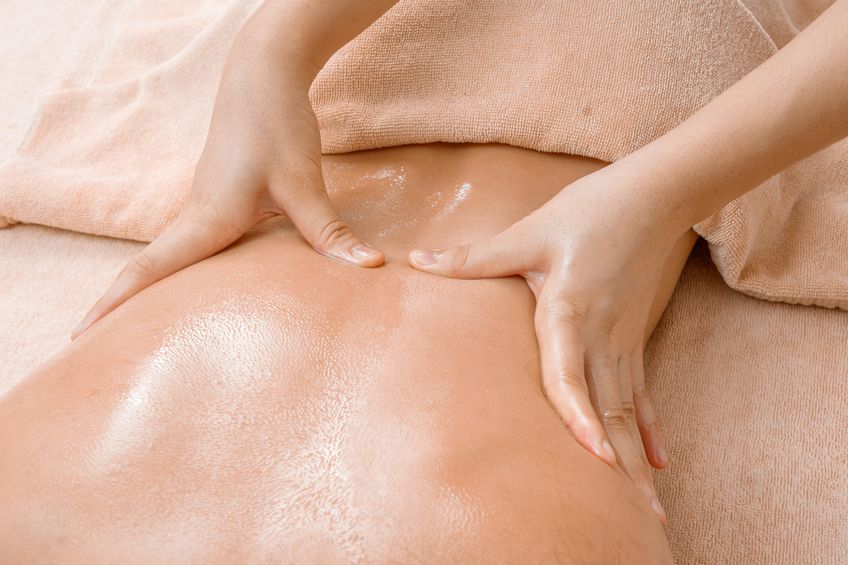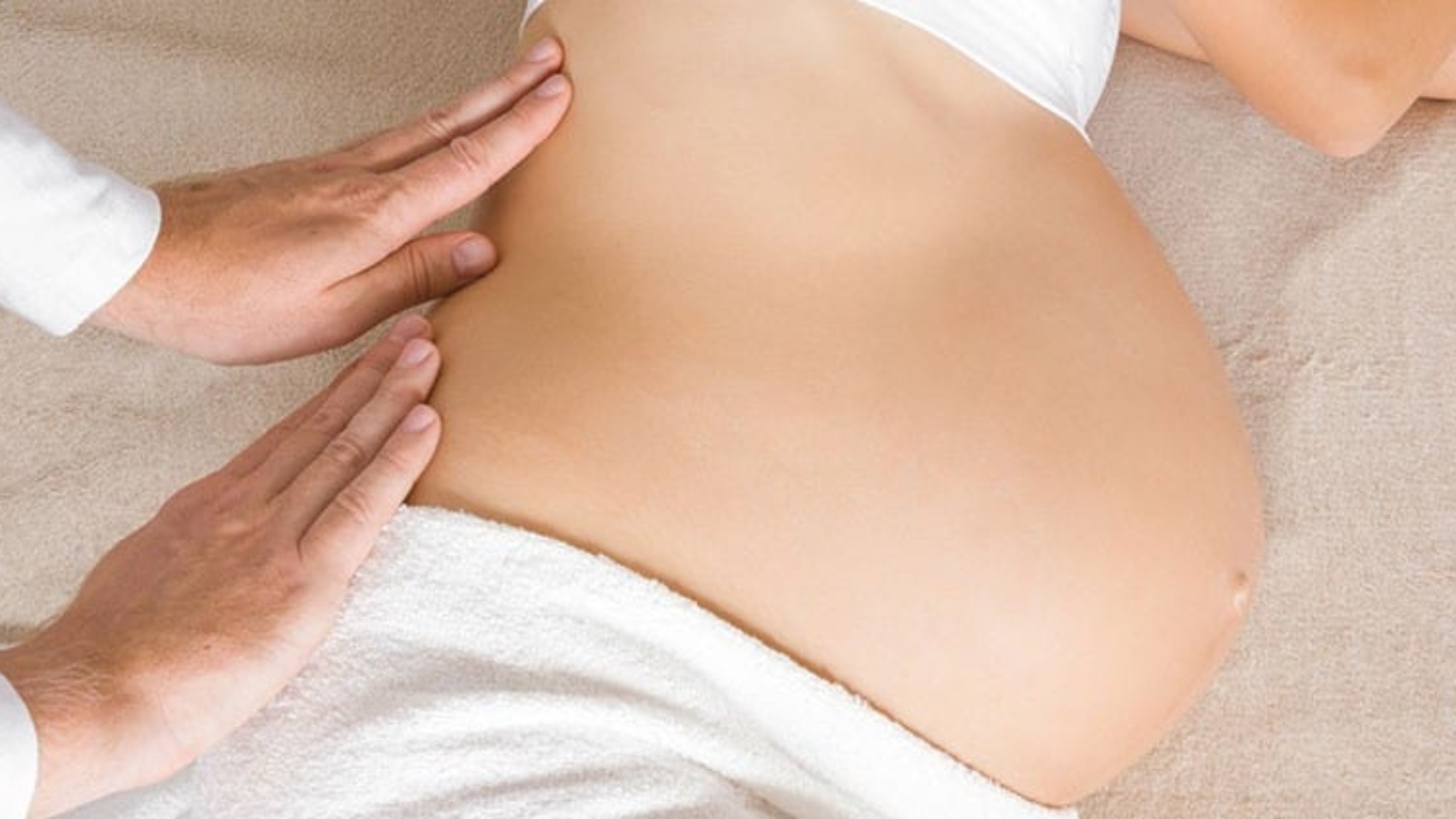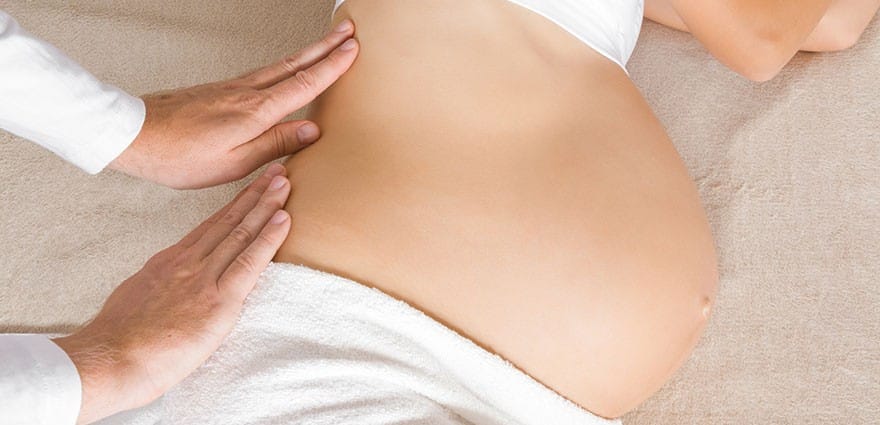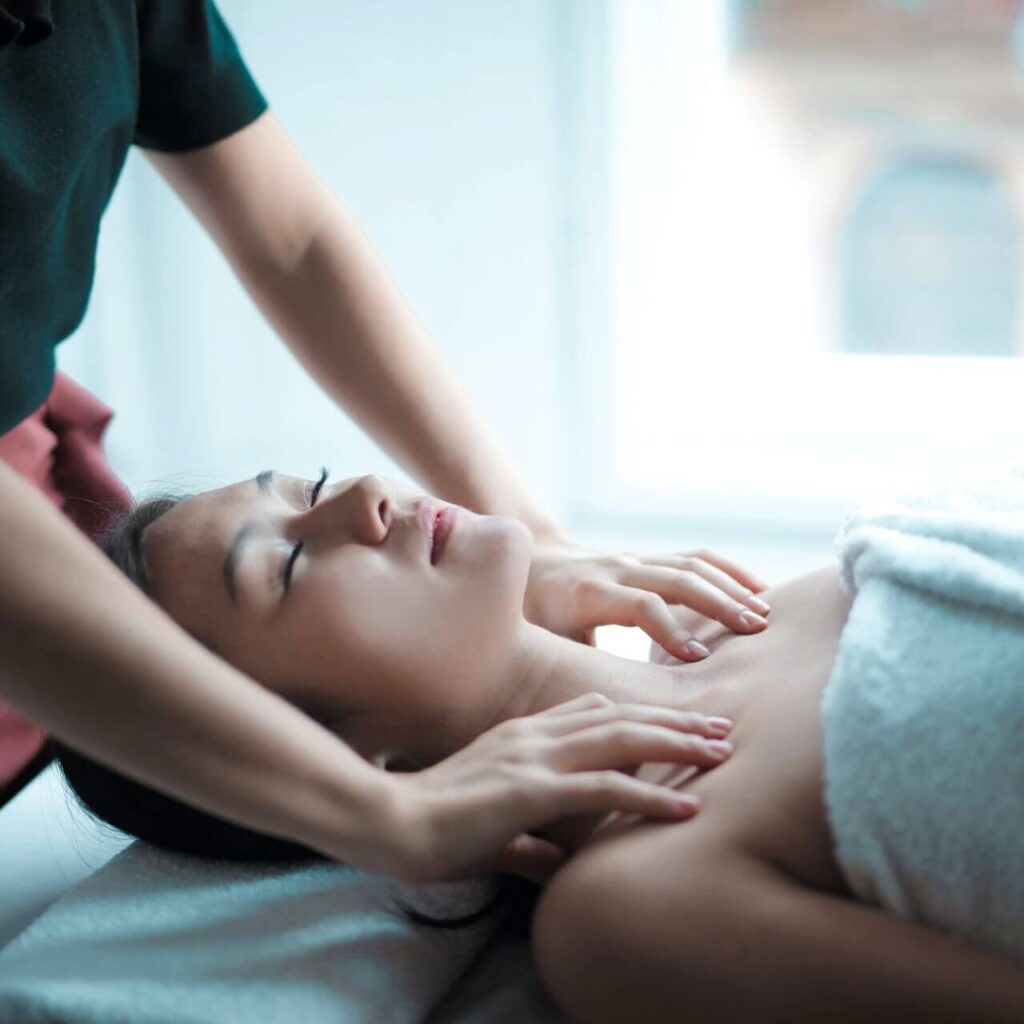Are you a little anxious? Do you have back pain? You’re not by yourself. Back tightness and pain affect many people daily. Perhaps a back massage is exactly what you need. This post will discuss the advantages of back massage therapy, its mechanisms, and why you should consider getting one for relaxation and pain management.

Introduction to Back Massage Therapy
For millennia, people have utilized back massage therapy to relieve pain and tension. A quality back massage can be quite beneficial, regardless of whether you’re in chronic pain or just need time to relax. Consider your muscles as tightly coiled rubber bands. A professional massage therapist can assist in releasing the knots in your muscles, allowing you to feel pain-free and rejuvenated.
Back massage therapy aims to improve general wellness, lessen tension, and relieve pain by manipulating the soft tissues of the back. It can involve a variety of methods, including kneading, stroking, and applying pressure to particular spots. The main objectives are to increase the body’s natural healing processes, ease muscle tension, and promote circulation.
The Science Behind Back Massage
A back massage has scientific foundations; it’s not just about feeling nice. The natural painkillers in your body, endorphins, are released and blood flow is stimulated when a therapist massages your back. This combo can greatly lessen discomfort and enhance your general health.
The parasympathetic nerve system, which controls the body’s rest and digestion processes, is triggered during a massage. This activation encourages a calm and relaxed state by mitigating the negative consequences of stress and anxiety. Furthermore, physical therapy that involves working on muscles and tissues improves lymphatic drainage, which helps the body eliminate toxins.
Studies have indicated that massage therapy can reduce stress hormone cortisol levels while raising neurotransmitter levels linked to happiness and well-being, such as dopamine and serotonin. This change in the body’s chemistry lowers pain perception and promotes relaxation.
Additionally, massage can increase the connective tissues’ and muscles’ elasticity and flexibility. Massage helps injured or stressed muscles heal by releasing adhesions and increasing blood and nutrient flow. People who are healing from injuries or managing chronic pain disorders can especially benefit from this.
Back Massage Technique Types
Swedish Tights
Swedish massages are among the most often used kinds of back massages. Long, flowing strokes are used in this method to improve circulation and release tense muscles.
Effleurage (long, gliding strokes), petrissage (kneading and squeezing), friction (deep circular movements), tapotement (rhythmic tapping), and vibration (shaking or trembling movements) are the five main techniques that define Swedish massage. Together, these methods relieve tension in the muscles, promote better circulation, and calm the entire body.
To warm up the muscles and encourage relaxation, effleurage is usually applied at the start and finish of a session. Petrissage facilitates the release of muscular knots and enhances the tissue fluid flow. Friction helps relieve chronic pain and stress by acting on the deeper layers of muscle and connective tissue. While vibration aids in tension release and relaxation, tapotement activates nerve endings and improves muscle tone.
Massage with Deep Tissue
For those who are suffering from persistent discomfort, a deep-tissue massage may be more appropriate. This method helps to dissolve scar tissue and reduce pain by focusing on the deeper levels of muscle and connective tissue.
Deep tissue massage targets deeper levels of muscle and fascia (the connective tissue that surrounds muscles) by using slow, purposeful strokes and deep finger pressure. People with persistent muscle tension, injuries, or ailments like fibromyalgia and sciatica benefit most from it.
The therapist applies steady pressure to particular regions with their fingers, thumbs, elbows, and forearms. This lessens discomfort, increases flexibility, and releases knots in the muscles. Deep tissue massage shouldn’t hurt, even if it can be rather strong at times. To make sure the pressure is within your comfort zone, you and your therapist must communicate well.
The Use of Trigger Points
Trigger points, or particular locations of tense muscles, are the focus of trigger point therapy. A therapist can reduce pain and stress in other body sections by applying pressure to these locations.
Small, extremely sensitive areas in muscles known as trigger points can be painful and uncomfortable. Stress, trauma, or excessive muscle use are frequently the causes of them. When a trigger point is activated, it can refer pain to other areas, creating a pattern of pain that can be challenging to identify and treat.
Using fingers, knuckles, or elbows, trigger point therapy applies direct pressure to the trigger points. After holding the pressure for ten to thirty seconds, the region is usually stretched and massaged. This lessens discomfort and helps to release tension. Myofascial pain syndrome, persistent muscle pain, and tension headaches are among the ailments for which it can be very helpful.
Hot Stone Therapy
Smooth, heated stones are applied to certain back locations during a hot stone massage to help loosen up muscles and increase blood flow.
Deep into the muscles, the heat from the stones releases tension and encourages relaxation. The stones can also be used by the therapist as a tool for massage, moving them along the muscles with light pressure. Heat and massage work together to improve blood flow, lower stress levels, and lessen pain.
People who suffer from arthritis, chronic pain, or muscle stiffness can benefit most from hot stone massage. In addition to promoting profound relaxation and comfort, the warmth of the stones amplifies the massage’s therapeutic effects.
The Benefits of Receiving a Back Massage
There are a wide range of advantages to receiving back massages. The following are a few of the biggest benefits:
Pain Management
Pain reduction is one of the main advantages of back massage. A massage can help reduce the symptoms of chronic back pain as well as occasional discomfort.
Tight muscles can be relaxed, inflammation can be decreased, and blood flow to the affected areas can be improved by massage. Together, these benefits have the power to greatly lessen pain and accelerate healing. Regular massage therapy can help people with chronic illnesses including sciatica, lower back pain, and muscular strains feel better over time and move more freely.
Reduction of Stress
In today’s hectic society, stress is a typical problem. Through the promotion of relaxation and release of tension, back massage therapy can assist in lowering stress levels.
Natural mood enhancers called endorphins are released when you have a massage. Additionally, it reduces cortisol levels, which helps mitigate the negative consequences of stress. A massage is a great way to handle stress and anxiety because of the calming atmosphere and physical touch that promote well-being and relaxation.
Enhanced Blood Flow
Enhancing blood flow is one way that a good back massage can assist your muscles and tissues receive more oxygen and nutrients.
Increased oxygen and nutrition delivery to the muscles through improved circulation promotes healing and lessens pain in the muscles. Additionally, it aids in the removal of waste products from metabolism from the tissues, lowering inflammation and accelerating healing. Regular massage therapy can enhance cardiovascular health and general well-being in people with impaired circulation or disorders such as peripheral artery disease.
Increased Adaptability
Frequent back massages can help you become more flexible by relieving stiff muscles and expanding your range of motion.
Tight muscles can be released and connective tissue adhesions can be broken up using massage therapy. This improves the range of motion and lowers the chance of injury by increasing the suppleness and flexibility of the muscles and joints. Getting regular massages can help athletes and those with physically demanding jobs perform better and avoid overuse issues.
Back Massage for Pain Reduction
Back pain may be extremely incapacitating, as anyone who has ever had it knows. The muscles and tissues that are causing your discomfort can be targeted by back massage therapy to produce significant relief. You can feel better and move more easily after receiving a back massage since it improves blood flow and releases tense muscles.
Numerous things, such as strained muscles, bad posture, trauma, or underlying medical disorders, can cause back discomfort. By loosening up tense muscles, lowering inflammation, and encouraging the release of endorphins, massage treatment helps with these problems. Pain is reduced and the healing process is sped up by the increased blood flow to the injured areas.
A comprehensive pain management regimen may include regular massage therapy for people with chronic back pain. It can support further therapies like medicine, physical therapy, or chiropractic adjustments. Massage therapy can enhance your total well-being and lessen the need for more invasive therapies by targeting the underlying causes of pain and fostering general wellness.
Back Massage to Release Tension and Stress
Your body might suffer from stress and tension, which can result in headaches, back pain, and other problems. A back massage helps ease tension in the muscles and encourage relaxation, which can help reduce stress. It’s similar to setting your body and mind on reset.
The neurotransmitters endorphins, serotonin, and dopamine which encourage emotions of contentment and relaxation are stimulated to be released during massage therapy. Additionally, it decreases cortisol levels, which lessens the negative effects of stress on the body and mind. A massage therapist’s calming touch can further improve relaxation by fostering a feeling of security and comfort.
Frequent massage therapy can ease muscle tension, encourage relaxation, and enhance the quality of your sleep, all of which can help you manage stress more successfully. It can also strengthen your resilience to life’s obstacles and elevate your mental well-being in general. Massage therapy can be an effective strategy for restoring balance and well-being for people who are experiencing high levels of stress, anxiety, or depression.
How Frequently Is a Back Massage Necessary?
The number of back massages you receive will depend on your unique needs. Weekly sessions could help if you’re managing stress or chronic pain. Once a month could be plenty for general upkeep and leisure. When deciding on the ideal schedule for you, it’s critical to pay attention to your body’s needs and seek professional advice.
Regular massages can help people with chronic pain disorders feel better all the time and speed up the healing process. Sessions held once a week or every two weeks can aid in pain management, inflammation reduction, and mobility enhancement. As your condition gets better over time, you might be able to lower the frequency of sessions.
A monthly massage can assist in maintaining muscular health, enhance circulation, and lower stress levels for overall well-being and stress management. Frequent massages can also help to maintain general relaxation and well-being by preventing the accumulation of tension.
It’s critical to discuss your unique wants and objectives with your massage therapist. They can assist you in choosing the kind and frequency of massage that will work best for you. The advantages of your massage sessions can also be increased by combining massage treatment with other healthy lifestyle habits like consistent exercise, a balanced diet, and stress reduction methods.
Selecting the Appropriate Massage Therapist
To get the most out of your back massage therapy, it’s important to choose the correct massage therapist. Seek out a certified expert with a solid track record and experience providing the kind of massage you require. A therapist should make you feel comfortable, so don’t be scared to ask questions.
Take into account a massage therapist’s credentials, background, and specializations while selecting one. Seek out a therapist who holds a license or certification from an established association for professionals. This ensures they have completed the necessary training and adhere to high standards of practice.
Consult reviews and ask loved ones, friends, or medical professionals for recommendations. A therapist who enjoys a good reputation and receives favorable feedback from their clients is more likely to deliver an excellent encounter. Finding a therapist who specializes in the kind of massage you require is also crucial, whether that massage is Swedish, deep tissue, trigger point, or another kind.
Ask the massage therapist about their approach to massage, their experience working with clients who have similar needs, and any special techniques they may have. This should be done at your initial visit. Make sure talking to them about your preferences and worries makes you feel at ease. A competent therapist will pay attention to your requirements, address your concerns, and develop a plan of care that is specific to your objectives.
Self-Back Massage Techniques
Although a professional massage is the best, you can attempt several at-home self-massage techniques to reduce tension and back discomfort.
Making Use of a Foam Roller
Using a foam roller can assist increase blood flow and relieve tense muscles. Just roll it along your back, paying particular attention to any uncomfortable or tight spots.
When using a foam roller, place it under your upper back while lying on your back. Gently massage the roller up and down your back using your legs, putting light pressure on any uncomfortable or tight spots. By moving the roller side to side or in tiny circles, you may also utilize it to target particular muscles. Lower back, shoulder and upper back stiffness can be effectively relieved with foam rolling.
Tennis Ball Massage
Using a tennis ball as a self-massage instrument can be quite beneficial. To release tension from tense muscles, place the ball between your back and a wall and roll it softly over them.
Position the tennis ball between your back and the wall while you stand with your back against it to give yourself a tennis ball massage. Press on sore or taut areas with your body weight as you lean into the ball. To massage the muscles, move the ball up and down or in small circles. This method works particularly well for reducing muscle knots and triggering points.
Conclusion
Numerous advantages of back massage therapy include pain relief and tension reduction. Your general well-being can be greatly improved by receiving a back massage, regardless of whether you’re in chronic pain or just need to relax. Before and following your massage, remember to take care of your body, convey your wants, and select a skilled therapist. You might be amazed at how much better you feel if you give it a try.














